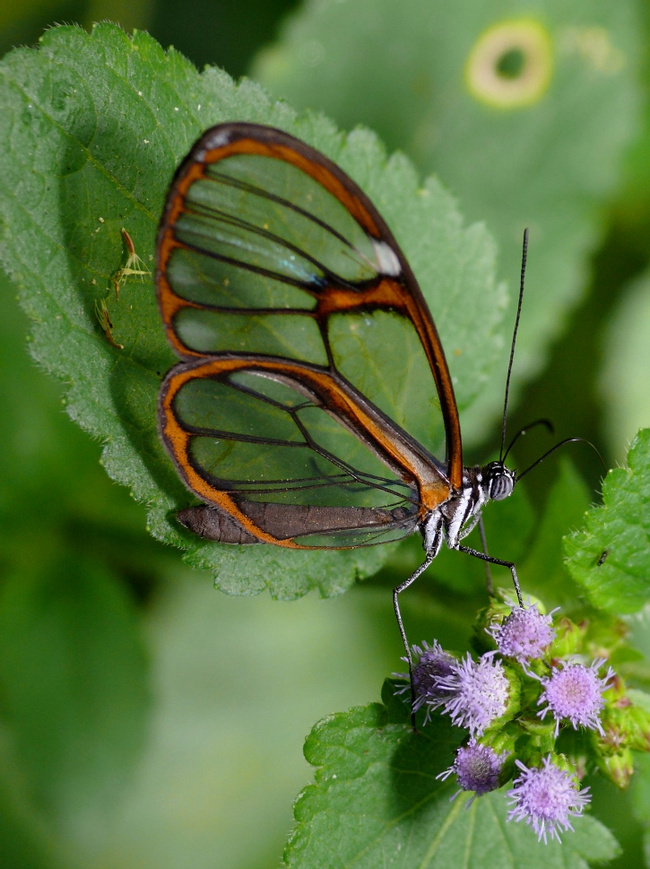
More about Glasswing Butterfly
Habitat and Range
A migratory butterfly, Greta oto is found in virtually all habitats in Central America. This glasswing ranges from Mexico to Panama.
Physical Description
The glasswing is so named because of its gloriously transparent wings. A brown to reddish-brown border helps make Greta oto’s wings more visible. The upper part of the forewing also has a white stripe through the brown region. Glasswings lack the tiny scales on most of their wings that give other butterflies and moths their colors, so the wings are, literally, see-through. It is very hard for the eye to follow as the butterfly dodges between understory plants among patches of light and shadow.
These are hard to spot even when the caterpillars are undergoing metamorphosis: they transform into small pupae with a chrome-silver color that masks them as, perhaps, water glistening in droplets on stems. These pupae look like small mirrors, which is why they are called espejitos in Costa Rica.
Adults have scaly antennae and an elegantly thin, brown body powering the delicate, clear wings (the veins in their wings are visible). Males have an additional feature to their wings: on the hind wing is a small plume of fine hairs that stay tucked under the overlap of the forewing most of the time. These become helpful in courtship.
Biology and Natural History
This species, Greta oto, is one of the most abundant ones and is spotted more often than some of its relatives in Central America. It can be found all year long, but month to month a population may fluctuate. An individual G. oto may travel as far as 12 km in a single day while it is migrating.
As an adult, this butterfly drinks the nectar of certain flowers (Asteraceae and Boraginaceae). The glasswing’s body absorbs chemicals from the nectar which make the glasswing taste unpleasant enough to discourage predators from eating it. The butterfly also uses the alkaloids to produce sex pheromones.
To find a mate, males congregate in shady corners of a forest and give off these pheromones to “call” females. The long hairs that males have tucked away help magnify how stinky they are, sort of the way hair makes an armpit smell stronger. Females smell the males and join the congregation to find a mate.
Diet
The host plants for Greta oto are two species of Cestrum. This glasswing (like others) also will feed on the droppings from birds that eat insects—by doing this, the glasswing gets amino acids into its diet.
Height/Weight
The average length of a glasswing butterfly is 28 to 30 mm.
Taxonomy
Order: Lepidoptera
Family: Nymphalidae
Sources
Chacón, Isidro and Montero, José. Butterflies and moths of Costa Rica. Instituto Nacional de Biodiversidad, Costa Rica, 2007.
DeVries, Philip J. The Butterflies of Costa Rica and Their Natural History: Papilionidae, Pieridae and Nymphalidae. Princeton, NJ: Princeton University Press, 1987.
-Amy Strieter, Wildlife Writer
Similar Profiles
We believe travel is more than ticking destinations off a list – it’s about discovering new places deeply, feeling connected wherever you go, and knowing you have a trusted team behind you every step of the way.



